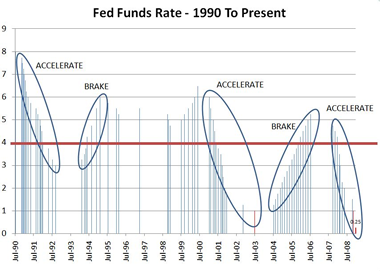The question keeps coming back: is the current account deficit (balance of trade) good or bad for the U.S.? Apparantly, the answer is yes, no, maybe... depending on which expert you read.
From Reuters:
Following are data on
official dollar holdings worldwide,
ranking reserve totals by country and size
and compared with
the size of U.S. fiscal deficits
and bond markets.
--------------------------------------------------------------
INTERNATIONAL FOREIGN CURRENCY RESERVES
--------------------------------------------------------------
TOP 10 CENTRAL BANK RESERVE HOLDINGS (in billions):
Latest End-2005 End-2000
China# $875 (Mar) $819 $166
Japan* $839 (Apr) $829 $347
Taiwan $259 (Apr) $253 $107
SKorea $223 (Apr) $210 $ 96
Euro zone* $200 (Apr) $196 $240
India* $154 (Apr) $131 $ 40
Russia* $153 (Apr) $137 $ 28
Hong Kong* $127 (Apr) $124 $108
Singapore* $128 (Apr) $117 $ 80
Malaysia $ 76 (Apr) $ 71 $ 26
* = excluding gold, SDRs, other assets
- Total rise of these 10 in April, ex China = $40 bln
- Total rise of these 10 in 2006 = $147 bln, or 5.1 percent
- Total rise in 2005 = $277 bln, or 8.7 percent
- Total rise since 2000 = $1,796 bln
What is obvious is a remarkable increase in the current account deficit - to 7% of the GDP. Wha t is not obvious is whether that is a problem or not.
Dr. Don Boudreaux, Chairman of the George Mason Economic Department, is adamant that this is not a problem... rather it is a sign of exceptional strength in the U.S. economy.
Others are not so sure:
US current account deficit 'unsustainable' – NY Fed chief
By Christopher Swann in Washington
Published: January 23 2006 19:29 | Last updated: January 23 2006 19:29
Timothy Geithner, president of the New York Federal Reserve, on Monday dismissed the view that the US current account deficit was sustainable, suggesting the risk of a sudden fall in the dollar would grow the longer the trade gap widened.
Still
others are certain it is a problem:
The current account deficit indicates that the United States is purchasing about 7% more than it is producing. It needs to import about $2.5 billion per day in foreign capital to finance this deficit. As a result, the net U.S. international investment deficit reached $2.5 trillion in 2004 and likely exceeded $3 trillion at the end of 2005 (net international investment data for 2005 will be released on June 29). Foreign central banks and other private investors held $2.2 trillion in U.S. treasury securities at the end of the fourth quarter of 2005; foreign central banks held the sizeable majority (63%) of that government debt. As long as the U.S. maintains sizeable current account deficits, net borrowing and payments to foreign investors will continue to grow. The standard of living of future generations will be depressed by the need to pay for today's heavy borrowing from abroad.
But then others say it is just the way it should be... neither good or bad:
International Finance Discussion Papers
 |
| The U.S. Current Account Deficit and the Expected Share of World Output
Charles Engel; John H. Rogers
2006-856
|
Abstract: We investigate the possibility that the large current account deficits of the U.S. are the outcome of optimizing behavior. We develop a simple long-run world equilibrium model in which the current account is determined by the expected discounted present value of its future share of world GDP relative to its current share of world GDP. The model suggests that under some reasonable assumptions about future U.S. GDP growth relative to the rest of the advanced countries -- more modest than the growth over the past 20 years -- the current account deficit is near optimal levels. We then explore the implications for the real exchange rate. Under some plausible assumptions, the model implies little change in the real exchange rate over the adjustment path, though the conclusion is sensitive to assumptions about tastes and technology. Then we turn to empirical evidence. A test of current account sustainability suggests that the U.S. is not keeping on a long-run sustainable path. A direct test of our model finds that the dynamics of the U.S. current account -- the increasing deficits over the past decade -- are difficult to explain under a particular statistical model (Markov-switching) of expectations of future U.S. growth. But, if we use survey data on forecasted GDP growth in the G7, our very simple model appears to explain the evolution of the U.S. current account remarkably well. We conclude that expectations of robust performance of the U.S. economy relative to the rest of the advanced countries is a contender -- though not the only legitimate contender -- for explaining the U.S. current account deficit.








